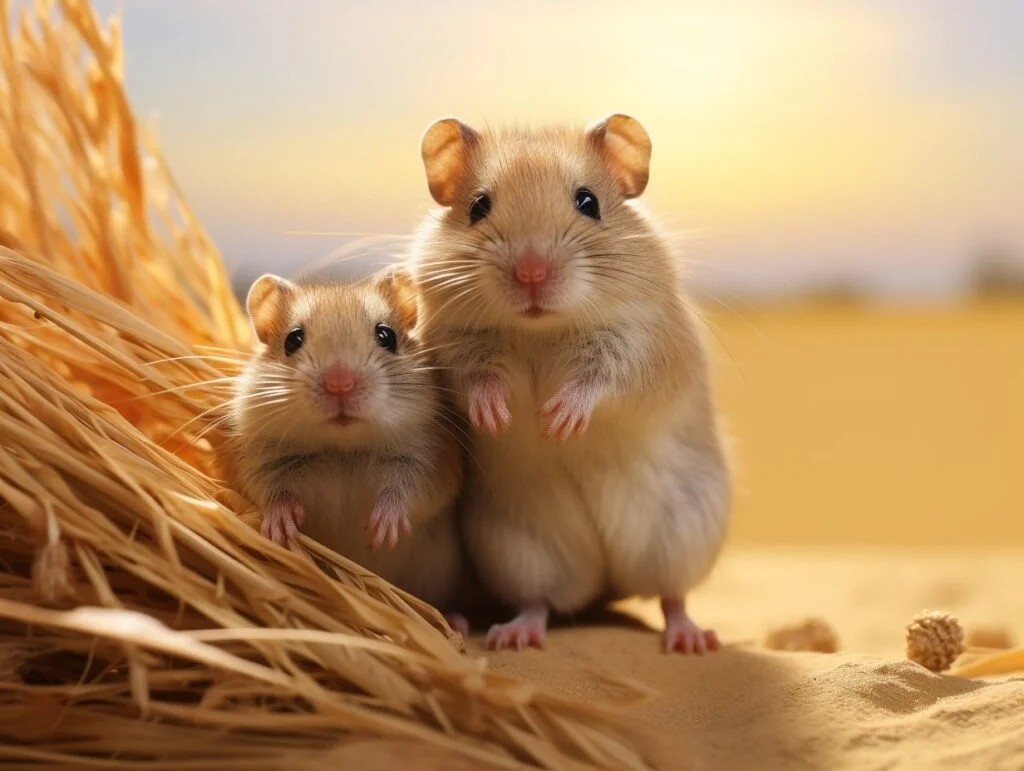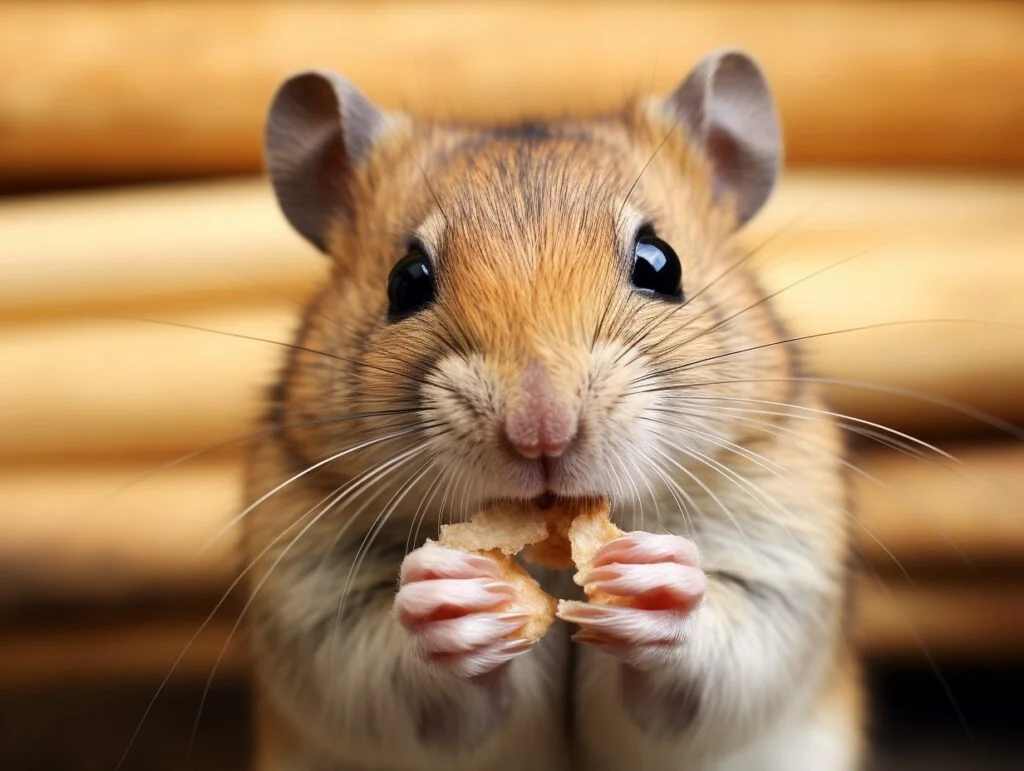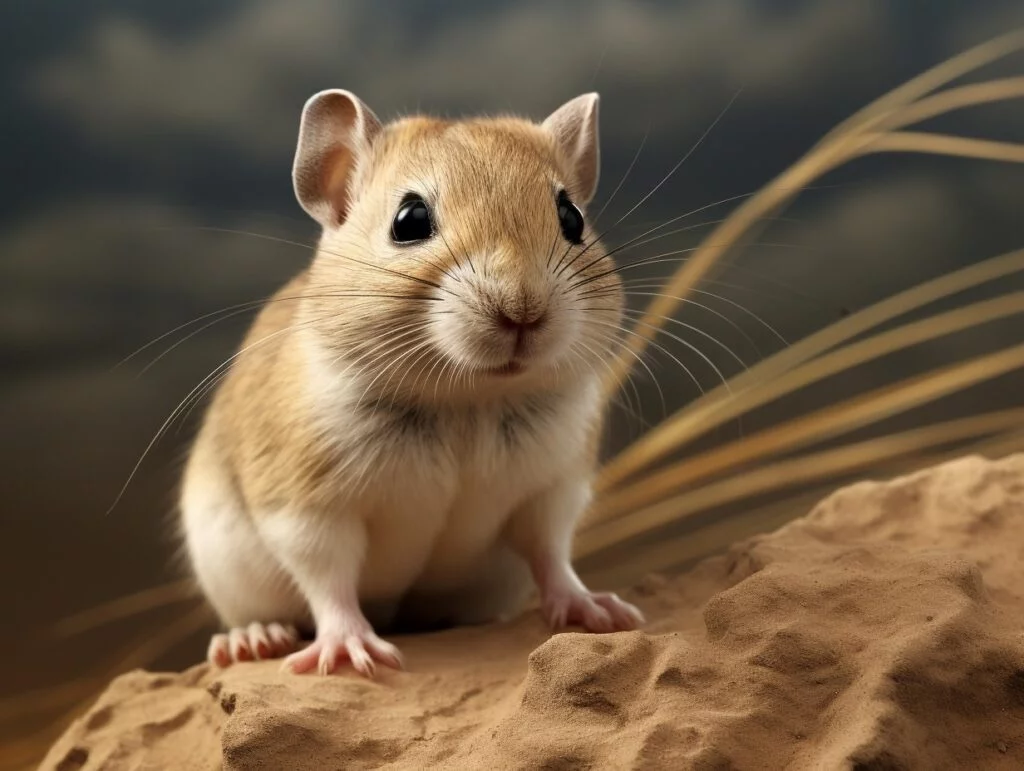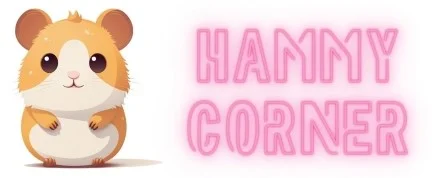Choosing the perfect pet for your family can be a daunting task. Gerbils and hamsters are two popular options, but how do you decide which one is right for you? In this article, we’ll compare gerbil vs. hamster to help you make an informed decision.
Key Takeaways:
- Gerbils and hamsters are both popular pet options.
- Both species have similarities and differences in terms of lifespan, behavior, size, care, diet, habitat, characteristics, and interaction with humans.
- Factors such as your lifestyle, space availability, and personal preferences should be considered when deciding between a gerbil and a hamster.

Gerbil vs. Hamster Lifespan
One of the key considerations when choosing a pet is how long it is likely to live. Gerbils and hamsters have different average lifespans, which can influence the length of time you will have with your furry friend.
Gerbils typically live longer than hamsters, with an average lifespan of 3-4 years. However, with proper care and attention, gerbils can live up to 7 years. In contrast, hamsters have a shorter lifespan, with an average of 2-3 years. Some species, such as the dwarf hamster, may live up to 4 years.
It’s important to note that factors such as genetics, diet, and environmental conditions can impact the lifespan of both gerbils and hamsters. Ensuring that your pet has a healthy and enriched lifestyle can lead to a longer and happier life.
Gerbil vs. Hamster Behavior
When it comes to behavior and temperament, gerbils and hamsters have some similarities but also notable differences. Understanding these nuances can help you choose the right furry friend for your household.
Here’s a table summarizing the behavior differences between gerbils and hamsters:
| Behavior | Gerbils | Hamsters |
|---|---|---|
| Social | Sociable, often kept in pairs or groups | Solitary, prefers to live alone |
| Activity | Diurnal (active during the day) | Nocturnal (active during the night) |
| Burrowing Habits | Require deep substrate for tunnels | Tend to hoard food and nest materials |
| Interaction | Generally friendly and curious | May become defensive or bite if threatened |
| Handling | May take time to become comfortable | Can become used to owners with gentle handling and patience |
Gerbil Behavior:
Gerbils are sociable creatures and are often kept in pairs or groups. They are active during the day and enjoy playing and exploring their environment. Gerbils are also known for their burrowing habits, and they require deep substrate for digging tunnels. They are generally friendly and curious towards humans but may take some time to become fully comfortable with handling.
Hamster Behavior:
Hamsters are nocturnal and are most active during the night. They are solitary animals and prefer to live alone. Hamsters are also known for their tendency to hoard food and nest materials. They may become defensive when their territory is invaded, and they may bite if they feel threatened. However, with gentle handling and patience, they can become used to their owners.
Both gerbils and hamsters have unique personalities and habits that should be considered when choosing a pet. Gerbils are more social and active during the day, while hamsters are solitary and nocturnal. However, with proper care and attention, both can make wonderful companions.
Gerbil vs. Hamster Size

Gerbils and hamsters differ in size and physical characteristics. While both species are small, gerbils tend to be larger than hamsters. The average adult gerbil can grow up to 4 inches in length, while the average adult hamster measures between 2 and 3 inches in length.
Another noticeable difference is the tail length. Gerbils have long, tufted tails that can measure up to 6 inches, while hamsters have short tails that are not typically visible.
| Gerbil | Hamster | |
|---|---|---|
| Average Length | 4 inches | 2-3 inches |
| Average Weight | 2-3 ounces | 1-2 ounces |
| Tail Length | Up to 6 inches | Short and typically not visible |
When it comes to weight, gerbils also tend to be slightly heavier than hamsters. A fully grown gerbil can weigh between 2 and 3 ounces, while a fully grown hamster typically weighs between 1 and 2 ounces.
It’s important to consider the size difference when choosing a cage and accessories for your furry friend. Gerbils will require a larger cage and more space to run and play than hamsters. It’s also important to choose toys and accessories that are appropriately sized for your pet to prevent injury.
Gerbil vs. Hamster Care
When it comes to caring for gerbils and hamsters, there are some important differences to consider. Both species require proper housing, nutrition, and attention to their health, but there are unique aspects to each that owners should be aware of.
| Care Needs | Gerbil | Hamster |
|---|---|---|
| Housing | Gerbils prefer a larger living space with multiple levels for climbing and burrowing. They also need a solid-bottom cage to prevent injury. | Hamsters require a cage with ample room to exercise but also enjoy hiding spots and tunnels. A wire cage or aquarium with a secure lid can be suitable. |
| Bedding | Wood shavings or paper-based bedding is recommended for gerbils, as they enjoy burrowing and creating tunnels. | Hamsters like to nest and prefer a soft, absorbent bedding material such as paper, wood shavings, or recycled paper products. |
| Feeding | Gerbils have a unique digestive system and require a diet high in protein. They enjoy fresh vegetables, fruits, and high-quality, pellet-form food. | Hamsters also require a balanced diet but may have different preferences. They benefit from a mix of seeds, pellets, and fresh produce. |
| Grooming | Gerbils are naturally clean animals and groom themselves regularly. They do not require frequent bathing but might need their nails trimmed. | Hamsters require occasional grooming, including nail trimming and, in some cases, a sand bath to help control oiliness in their fur. Be cautious not to over-groom and stress them. |
| Health | Gerbils are generally healthy and hardy animals but can be prone to respiratory infections if their cage is not kept clean. | Hamsters can be prone to obesity and require regular exercise to maintain their health. They can also develop wet tail, a bacterial infection that can be fatal if left untreated. |
It is important to note that both gerbils and hamsters require daily attention and interaction with their owners. They are intelligent and social animals that need mental stimulation and exercise to thrive.
Gerbil vs. Hamster Diet
When it comes to the diet of gerbils and hamsters, it is essential to provide them with a balanced and nutritious diet to keep them healthy and active. Both these furry creatures have specific dietary needs that you need to consider before adopting them as pets. Let’s take a closer look at the diet requirements of gerbils and hamsters.
Gerbil Diet

Gerbils are omnivores and require a well-balanced diet consisting of seeds, grains, vegetables, and fruits. A good quality gerbil food mix that is high in protein, such as grains, seeds, and dried vegetables, should make up the majority of your gerbil’s diet. Avoid feeding them too much fat, sugar, and salt as it can harm their digestive system, leading to health problems such as obesity, diabetes, and heart disease. Fresh vegetables and fruits, such as spinach, carrots, and apples, should be given as occasional treats.
Hamster Diet
Hamsters are also omnivores and require a diet rich in protein, carbohydrates, and fiber. A good quality hamster food that contains a mixture of seeds, grains, and nuts should be the primary component of their diet. You should also provide fresh vegetables such as carrots, broccoli, and cauliflower, and fruits like apples and pears. Avoid feeding them sticky, sugary treats or high-fat foods such as cheese, meat, and chocolate as it can cause digestive problems and harm their overall health.
It is essential to provide clean, fresh water at all times for both gerbils and hamsters. Ensure that the water is easily accessible and change it daily to prevent bacteria build-up.
Overall, when it comes to the diet of gerbils vs hamsters, both require a balanced, nutritious diet to stay healthy and happy. It is crucial to monitor their food intake and make sure you are feeding them the right foods in the correct portions to prevent any health issues from arising.
Gerbil vs. Hamster Habitat
The ideal habitat and living environment for gerbils and hamsters differ slightly, and it’s essential to provide a comfortable and safe space for your furry friend.
Gerbil Habitat Requirements:
- Space: Gerbils are active creatures and need ample space for running, playing, and burrowing. A minimum cage size of 10 gallons is recommended, but larger is better.
- Cage Type: Avoid using aquariums as they trap moisture and lack ventilation. Opt for a wire cage with a solid floor, at least 12 inches high to prevent escapes.
- Bedding: Fill the enclosure with suitable bedding material like aspen shavings, paper bedding, or shredded paper to allow for burrowing.
- Enrichment: Gerbils enjoy hiding spots and benefit from having an exercise wheel for physical activity.
- Caution: Avoid using plastic accessories, as gerbils may chew and ingest them.
Hamster Habitat Requirements:
- Space: Hamsters also need space to move, but the required size varies by species. Syrian hamsters need a minimum of 360 square inches of floor space, while dwarf hamsters can live in smaller habitats.
- Cage Type: Use a cage with a solid bottom to prevent injury.
- Bedding: Provide bedding material like wood shavings or paper.
- Enrichment (Syrian Hamsters): Syrian hamsters enjoy having a house for hiding, plenty of chew toys, and an exercise wheel.
- Enrichment (Dwarf Hamsters): Dwarf hamsters benefit from tunnels and hiding spots.
- Security: Ensure the cage is secure and escape-proof, as hamsters are skilled escape artists.
Remember to clean the cage regularly to prevent odors and bacteria buildup. Both gerbils and hamsters are sensitive to abrupt changes in their environment, so make any changes gradually. Ensure the habitat is in a quiet and secure location away from direct sunlight and drafts.
Gerbil vs. Hamster Characteristics

Gerbils and hamsters may seem similar at first glance, but they have unique characteristics that set them apart. In this section, we will explore the distinguishing features of each species.
| Characteristic | Gerbil | Hamster |
|---|---|---|
| Intelligence | Gerbils are highly intelligent and can learn to recognize their owners and respond to their names. | Hamsters are also intelligent but may not be as receptive to training as gerbils. |
| Agility | Gerbils are known for their acrobatic abilities and can jump up to three times their body length. | Hamsters are more cautious and may not be as active as gerbils. |
| Adaptability | Gerbils are highly adaptable and can thrive in a variety of environments. | Hamsters may not be as adaptable and may require more specific care. |
| Special abilities | Gerbils have a unique ability to “drum” their feet, which is a sign of excitement or warning to other gerbils. | Hamsters have cheek pouches that they use to store food, allowing them to bring food back to their burrows. |
It’s important to consider these characteristics when deciding between a gerbil and a hamster as a pet. If you’re looking for a highly intelligent and active pet, a gerbil may be the right choice. However, if you’re seeking a more low-maintenance pet, a hamster may be a better fit.
Gerbil vs. Hamster Interaction with Humans

In the context of engaging with humans, gerbils and hamsters can both serve as excellent pets, yet they exhibit distinct personalities and behaviors. Gerbils are renowned for their sociability and inquisitive nature, often displaying a fondness for their owners. They readily embrace human interaction, welcoming handling and playtime, albeit necessitating gentle care due to their delicate disposition. In contrast, hamsters lean toward solitude and territoriality, typically favoring autonomy. They are less inclined to demonstrate affection and may exhibit aggression when feeling threatened or stressed. It’s important to bear in mind that individual upbringing and experiences can contribute to variations in the behavior of both gerbils and hamsters.
If you seek a pet that thrives on human companionship and ease of handling, gerbils may represent the superior choice. Their social inclination enables them to forge strong bonds with their human caregivers. However, for those desiring a pet demanding less attention and interaction, hamsters might be the more suitable option. It is crucial to recognize that both gerbils and hamsters necessitate daily interaction and care to ensure their happiness and well-being.
While both gerbils and hamsters can bring joy to children as pets, adult supervision remains imperative to ensure gentle and proper handling. Gerbils may be better suited for families with responsible children capable of offering daily care and attention. Conversely, hamsters could be a preferable choice for families with younger children who may require less interaction with the pet.
Gerbil vs. Hamster: Making the Decision
After considering the similarities and differences between gerbils and hamsters, you may be wondering which one is the best fit for you. Ultimately, the decision will come down to your personal preferences, lifestyle, and available space. Here are some factors to consider when making your choice:
| Aspect | Gerbils | Hamsters |
|---|---|---|
| Social Behavior | Gerbils are generally more social and curious, often enjoying interaction with their owners. | Hamsters tend to be more solitary, preferring to be left alone. |
| Lifespan | Gerbils generally have a longer lifespan, averaging 2-4 years, while hamsters typically live for 1-2 years. | Hamsters have a shorter lifespan, with an average of 1-2 years. |
| Size | Gerbils are larger than hamsters, making them easier to handle, but they need more space in their habitat. | Hamsters are smaller and require less space in their habitats. |
| Care Requirements | Both gerbils and hamsters share common care needs, including suitable habitats, varied diets, and regular cleaning. However, specific dietary preferences and daily routines may vary. | Both gerbils and hamsters have similar care requirements, but their individual dietary preferences and daily routines may differ. |
| Interaction | Gerbils are more likely to bond with their owners and enjoy human interaction. | Hamsters tend to be more independent and may not enjoy frequent handling. |
The decision between a gerbil or a hamster as a pet will depend on what you are looking for in a furry companion. If you want a social and active pet that enjoys interacting with humans, a gerbil may be the best choice. If you prefer a more independent pet that requires less attention, a hamster may be the better option. Consider your lifestyle, available space, and personal preferences to make the best decision.
Conclusion
After examining the key differences and similarities between gerbils and hamsters, it’s clear that both make great pets for the right person. Gerbils are social creatures and thrive in pairs or groups, while hamsters prefer to live alone and require less social interaction.
If you’re looking for a pet that will entertain you for hours with its agility and problem-solving abilities, a gerbil might be the right choice. However, if you’re seeking a quieter pet that is easy to care for and doesn’t require as much attention, a hamster might be a better fit.
Ultimately, the choice between gerbils and hamsters comes down to personal preference, lifestyle, and space availability. No matter which furry friend you choose, it’s important to provide them with a comfortable and stimulating environment, proper nutrition, and regular attention to ensure their happiness and health.
FAQ
Q: What are the main differences between gerbils and hamsters?
Gerbils and hamsters differ significantly in their behavior, size, lifespan, and care needs. Gerbils are known for their social and active nature, whereas hamsters tend to be more solitary. In addition, gerbils are larger and enjoy a longer lifespan compared to hamsters.
Q: How long do gerbils and hamsters typically live?
Gerbils have an average lifespan of about 2-4 years, while hamsters usually live for around 1.5-3 years. However, with proper care, both gerbils and hamsters can potentially live longer.
Q: Are gerbils and hamsters good pets for children?
Both gerbils and hamsters can make good pets for children, but it’s important to consider their individual needs and characteristics. Gerbils are generally more social and enjoy interaction, while hamsters are more independent and may not be as tolerant of excessive handling.
Q: What should I feed my gerbil or hamster?
Gerbils and hamsters have specific dietary requirements. They should be fed a balanced diet of commercial pellet food supplemented with fresh vegetables, fruits, and occasional treats. It’s important to avoid foods that are toxic or high in sugar or fat.
Q: How should I set up the habitat for my gerbil or hamster?
Gerbils and hamsters require a suitable cage with proper bedding, hiding spots, and toys for enrichment. The cage should be spacious enough for them to exercise and explore. It’s also important to provide a clean and safe environment for their health and well-being.
Q: Can gerbils and hamsters be housed together?
Gerbils are social animals and can usually be housed together in same-sex pairs or small groups. However, hamsters are generally solitary and should be kept separately to prevent aggression and stress. Mixing gerbils and hamsters is not recommended.
Q: Do gerbils and hamsters require any special grooming?
Gerbils and hamsters are generally self-grooming animals and do not require regular bathing. However, they do need access to sand baths to maintain their fur and remove excess oils. Nails may need occasional trimming, and dental health should be monitored.
Q: Are gerbils and hamsters suitable for individuals with allergies?
Both gerbils and hamsters can potentially trigger allergies in individuals who are sensitive to animal dander. It’s recommended to spend time with the specific species to assess any allergic reactions before committing to them as pets.
Q: Can gerbils and hamsters be trained?
Gerbils and hamsters can be trained to some extent, although they are not as trainable as dogs or cats. They can learn simple commands and tricks with patience and positive reinforcement. Training can help to establish a bond and ensure their safety.
Q: Is one better than the other, gerbils or hamsters?
The choice between gerbils and hamsters ultimately depends on individual preferences, lifestyle, and compatibility. Both species can make wonderful pets with proper care and attention. It’s important to research and consider the specific needs and characteristics of each before making a decision.




